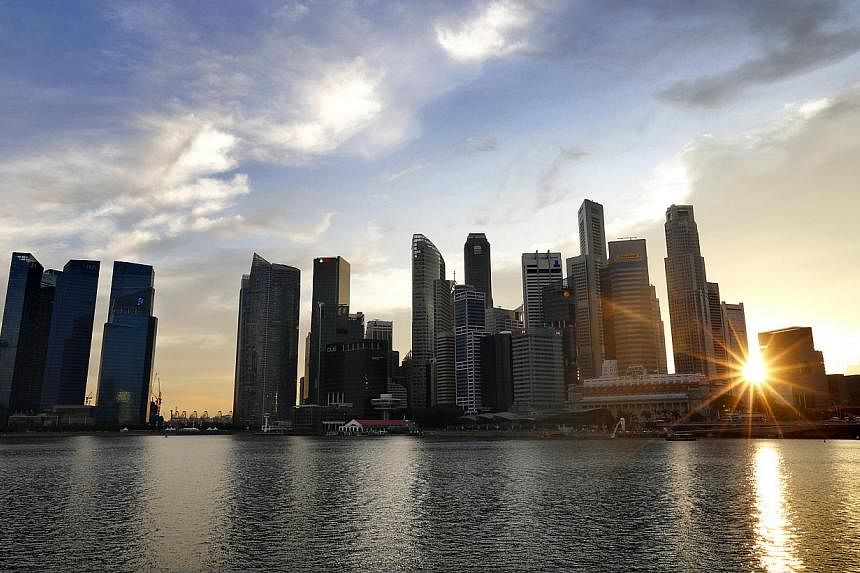Two major corporate developments will take place this year that will accelerate the transformation of the Singapore economy into a higher-value service economy.
First is the mega merger between two urban planning entities under JTC Corporation and Temasek Holdings. JTC's Ascendas and Jurong International will merge with Temasek's Surbana and Singbridge to create what is likely to be one of the world's largest integrated entities for urban planning and development.
Worth $5 billion, this powerful new vehicle will deepen Singapore's footprint in urbanising Asia.
Then there is the joint venture between Singapore Exchange (SGX) and venture capital firm Clearbridge Accelerator (CBA) to create the world's first equity- based crowdfunding platform in Asia.
Mr Mohamed Nasser Ismail, head of SME development and listings at SGX, said that SGX will work with CBA to help companies access capital more easily and become a pan-Asian platform to support equity crowdfunding.
These two developments play to Singapore's advantage as a service economy with strengths in financial services and urban planning.
With the growth of exportable service industries such as finance and insurance and wholesale trade over the years, and as manufacturing industries progressively move into knowledge- and skill-intensive service activities, the Singapore economy has become more service-oriented.
Services' share of Singapore's nominal GDP has gone up over the last decade, from 64 per cent in 2003 to 70 per cent in 2013. Correspondingly, the share of manufacturing has moderated from 26 per cent to 19 per cent over the same period.
This phenomenon is not unique to Singapore - several developed economies, including Japan, Denmark, Sweden, France and Britain, have also experienced a rising share of services as a proportion of GDP over the past decade.
As a small economy with limited land, Singapore really has no choice but to focus deeper on higher-value economic activities.
Intent on becoming Asia's innovation capital, the Singapore Government has allocated a record $16.1 billion under its five-year Research, Innovation and Enterprise Plan for the period 2011-2015.
In the latest Global Innovation Index 2014 that measures economies' innovation capabilities and results, Singapore ranks No. 7, just behind the United States.
Patent filing is often regarded as one key indicator of innovation. On a per capita basis based on resident patent application per million population, Singapore is ranked No. 16 in global rankings, with the top five nations being the Republic of Korea, Japan, Switzerland, Germany and the US.
As Singapore positions itself more as an innovation-driven service economy, it will have to invest more in intellectual capital creation in the form of R&D and service innovation that will produce intellectual property rights such as patents, copyrights and design rights.
It is already one of the most networked societies in the world - ranked fourth in the 2014 Networked Society City Index.
The Government has just intensified its push to position Singapore as a "smart nation" where the Internet of Things and big data analytics will help create new digital estate and grow the economy. Data analytics has been identified as a new strategic sector.
In water technology, biomedical engineering and vertical farming, the city state is already beginning to reap the fruits of R&D and innovation.
At this point in its economic history, Singapore is still more like New York than Silicon Valley. The financial sector contributes almost 12 per cent to the economy and that is unlikely to change in the near future.
Yet it has ambitions to become more like Silicon Valley and has made some good start, as Facebook co-founder Eduardo Saverin, who lives in Singapore, said recently.
Whether Singapore becomes a better New York or an Asian Silicon Valley is not as important as the value add to the economy. It should choose whichever route will accelerate higher value add and promote quality economic growth.
Given its strength in services, it makes sense to focus on its core competencies and sharpen its service or business model innovation capabilities. For instance, financial engineering analytics and positioning Singapore to be the world's premier digital hub for urban living could be niche areas that play to its advantage.
Similarly, the proposed mega- entity to be formed by Temasek and JTC could well give birth to a global leader in the urban planning service arena that leverages on the country's brand premium.
But Singapore must develop a "pull through" strategy to pull its SMEs onto the world stage. These SMEs employ 80 per cent of the workforce but contribute only 25 per cent to GDP.
My hope for the future is for a better calibration of incentives and more pathways to nurture the rise of small innovative service enterprises.
The writer is an intellectual capital practitioner and author who lectures part-time on the Law of Investments and Financial Markets at RMIT University.

